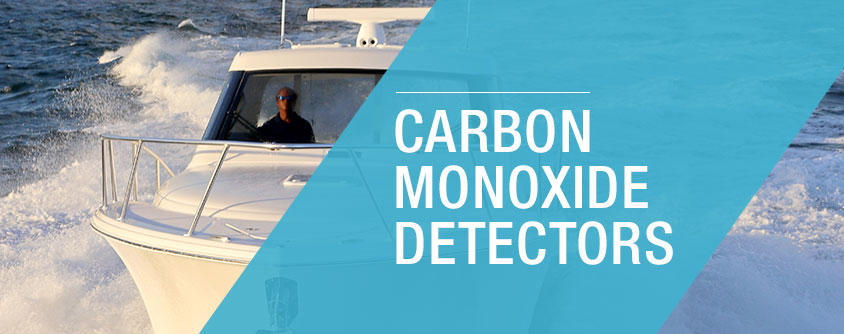
CARBON MONOXIDE (CO)
Carbon Monoxide (CO) can be a silent killer on board your boat. To help prevent carbon monoxide poisonings, a marine-rated CO detector should be present on every gasoline or diesel-powered boat with an enclosed accommodation space, or boat with an LPG (propane) system or open flame device, such as an alcohol stove.
- CO detectors save lives: They provide early alerts of the presence of CO in your boat.
- Always use a marine-rated CO detector on your boat. Never use a household CO detector.
- Always have a working CO detector on board: CO can come from your vessel or other vessels around you.
- Test the detector every time you board your boat.
- Never disconnect a CO detector because of “nuisance” alarms. These alarms are telling you that CO is present.
- Ensure that you properly maintain your detector. Read your owner’s manual and follow the detector manufacturer’s recommendations.
- Replace the CO detector every 5 years or at the manufacturer’s recommended intervals.

Carbon Monoxide (CO) is a colorless, odorless and tasteless gas that is produced from the combustion of a carbon-based fuel such as gasoline, propane, alcohol or charcoal.
- CO enters your bloodstream through your lungs and replaces oxygen with CO molecules, thus blocking oxygen from entering your bloodstream. At low levels, CO poisoning symptoms mirror those of sea sickness and at high levels CO poisoning can result in unconsciousness or death.
- A CO detector “sniffs” the air around it at set timed intervals and sounds its alarm when it detects CO at a low level.
When CO is detected the CO detector will sound its alarm.
- If the alarm sounds, shut off any CO producing devices such as engines, generators or stoves and move passengers to safety.
- Never ignore a CO alarm. The alarm is directing the operator of the boat to remove themselves and their passengers from the hazard and then take action to reduce and eliminate the presence of CO.
- Ventilate the boat—open all doors, windows and hatches, and change the heading of the boat, if possible, into the wind.
- Look for sources of CO that may be from other boats, and take appropriate steps, which may include moving your boat to a safe place.
- The alarm will stop when CO levels are below a hazardous level.
- If anyone is exhibiting signs of CO poisoning, move them to fresh air and seek medical assistance.
For more information about how you can prevent carbon monoxide poisoning on recreational boats and for other boating safety information, contact:
United States Coast Guard
Office of Auxiliary and Boating Safety
Commandant (CG-BSX-2) Stop – 7501
2703 Martin Luther King Jr. Ave., S.E.
Washington, DC 20593-7501
uscgboating.org
202.372.1062
Office of Auxiliary and Boating Safety
Commandant (CG-BSX-2) Stop – 7501
2703 Martin Luther King Jr. Ave., S.E.
Washington, DC 20593-7501
uscgboating.org
202.372.1062
National Marine Manufacturers Association
231 S. LaSalle Street, Suite 2050
Chicago, IL 60604
nmma.org
312.946.6200
231 S. LaSalle Street, Suite 2050
Chicago, IL 60604
nmma.org
312.946.6200
American Boat & Yacht Council, Inc.
613 Third Street, Suite 10
Annapolis, MD 21403
abycinc.org
410.990.4460
613 Third Street, Suite 10
Annapolis, MD 21403
abycinc.org
410.990.4460
This brochure is published by NMMA for educational purposes only and it should not be assumed that all relevant safety information is included herein. NMMA makes no guarantee, representation or warranty, express or implied, at law or in equity, as to the validity, accuracy or sufficiency of the information included in this brochure. NMMA assumes no responsibility or liability for any injuries, claims, losses or damages arising in connection with the use of or reliance on the information included in this brochure.
POWERED BY 
